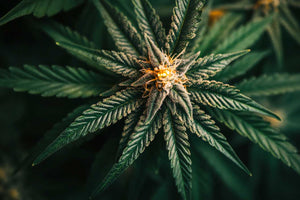
With the legalisation of marijuana, users and businesses began to grow marijuana themselves, but how to grow quality marijuana has also become a problem. Let's discuss the effect of LED grow lights on marijuana.
Lighting is essential when growing cannabis. The best possible lighting is natural sunlight. It has the perfect mix of UV rays that plants crave, and the closer you are to the equator, the better these rays get.
Cannabis needs a lot of light to produce high quality plants and flowers. On average, a cannabis plant needs twelve hours of darkness a day to flower. In general, the more light your plants get, the better and stronger they will grow, resulting in higher yields.
The use of grow lamps
Despite the advantages of outdoor growing, some growers prefer to use a grow light because it gives them more control over the plant and the growing season. Simply pointing the bulb at your plant is not enough for it to grow properly. In order to replace the sun with lighting, it needs to be provided with lamps that are specifically designed for growing cannabis.
The way a cannabis plant grows depends on the way the grow lamps are used. The best types of lamps are metal halide lamps, high pressure sodium lamps and now special LED grow lamps. Fluorescent lamps are also good because they give the best blue light for leaf growth. MH lamps work best during the vegetative phase, while ND lamps produce the best light during the flowering phase.
Distance between the grow lamps
The distance between the lamps is crucial to the growth of your plants. Too far apart and your cannabis will not get the light it needs, but too close and you risk burning your precious plants.
During the nursery stage of the plant, it is important to keep the lights at the right distance. One of the biggest mistakes growers make is placing lights too far apart. This results in plants that are long and slender, with weak stems that cannot support the weight of the plant and can hang upside down. These elongated stems occur when seedlings are stretched to get more light.
The actual optimal distance of your lamps depends on the type of light used and your grow room. Here are some basic guidelines:

Light intensity
Plants that get more light tend to grow better and produce more - that's a fact. However, it is also easy to oversaturate your plants with light and cause them to burn easily. Or you may set the lights too low, so that your plants do not get enough light and will 'stretch' or grow more slowly.
The light intensity or brightness can be measured in lumens (lm) as well as in lux:
Lumen - measures the luminous flux emitted by a source. The higher the lumen, the brighter the light source.
Lux - measures the light intensity that falls on a surface. Since plants only absorb the light that falls on their surface, light guides are usually measured with lux in grow guides.
Similar to the removal of the lamps, the optimal light intensity also depends on the type of light you want to use in the grow room. Here are some basic guidelines:

The color of LED grow light
Many people don't know that the color of light can affect the growth of your plants. Visible light actually behaves like a wave and shows different properties depending on the length of its waves. For example, a light with a wavelength of 400 nm is recognized by the human eye as a purple color.
Certain types of grow lamps show a certain light color. For example, MH (metal halides) produces a predominantly blue colored light, while LED lamps can isolate and emit a multitude of colors.
In terms of plant growth, blue light is best used during the seedling and growth stage because it promotes the formation of chlorophyll, a chemical that makes plants grow faster and stronger. MH lamps are often used because the blue light is said to mimic the summer months when the sun is high in the sky. Conversely, HPS lamps mimic the end of summer, with the sun's rays passing through more of the earth's atmosphere and showing a red spectrum that is ideal for the flowering of cannabis plants.
Lighting cycles
Like humans, plants need their sleep and usually cannot be lit by light 24 hours a day. In addition, cannabis lighting can be expensive when it comes to power consumption. This is another reason why it is a good idea to have a lighting cycle for your grow lights.
You cannot keep cannabis plants under constant light as the plants will not flower without darkness. The only time the plants can be exposed to light for 24 hours is when they are in the seedling phase as they are still babies and need a lot of light to grow.
In the dark, plants produce the hormones necessary for flowering. If the darkness is not disturbed by light, they will continue to bloom and growth will be reduced to a minimum. You need a good combination of the two to get a good harvest of marijuana.
For the duration of the vegetative phase, your plants need 18 hours of light and 6 hours of darkness. Once you're ready to flower your plants, you can trigger their flowering phase by setting the lighting cycle to 12 hours of light and 12 hours of total darkness.
Note: Content reprinted from VANQ

